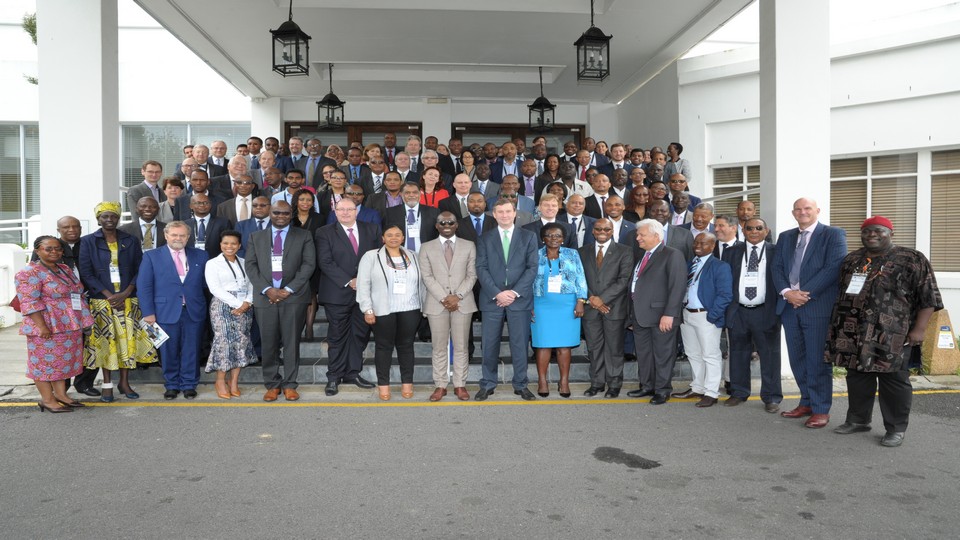Articles
Filter by
196 results found
News
The Global Infrastructure Hub’s Outlook shows the United States has one of the largest infrastructure gaps. What can the GI Hub’s InfraCompass tell us about fixing it?
Read time: 3 minutes
Published
07 Sep 2017
View article


Articles
InfraCompass is an interactive tool that looks at the infrastructure capabilities of 49 countries.
Read time: 3 minutes
Published
28 Sep 2017
View article


News
Over the past few decades, there has been substantial change in living standards globally. Keeping pace with profound economic and demographic changes will require a significant increase in infrastructure investment.
Read time: 3 minutes
Published
23 Feb 2018
View article


Articles
Brazil has become the largest market for public-private partnerships (PPPs) in Latin America, having invested around USD $386 billion in infrastructure from 1990 to 2017
Read time: 2 minutes
Published
11 Apr 2018
View article


Articles
The participants of the second Regional Roundtable on Infrastructure Governance held in Côte D’Ivoire last week reinforced the need for good governance across all stages of infrastructure delivery. The Regional Roundtable was the second of its kind, with the first held in South Africa in November 2017.
Read time: 5 minutes
Published
02 Jul 2018
View article


Articles
As outlined earlier in this blog series, private investors are looking for reliable returns to justify the risks that they are taking. Financing and procurement of cross-border projects will often be more complex than national projects due to the scale of the project and compounded risks, and the financial returns may be more uncertain than for national projects.
Read time: 6 minutes
Published
30 Jul 2018
View article


Published
18 Sep 2017
View article


Articles
Although the topic of infrastructure may not attract bold headlines, the reality in many parts of the world is that the inadequate provision of critical infrastructure...
Read time: 4 minutes
Published
12 Oct 2017
View article


Articles
Over the last decade, much has been written about globalisation and how we’re more connected than ever before. In the infrastructure world, we think of connectivity as the “linkages of communities, economies and nations through transport, communications, energy, and water networks across a number of countries” .
Read time: 4 minutes
Published
08 Mar 2018
View article


Published
19 May 2018
View article


Articles
When we as consumers decide to invest our money—whether through shares, bonds, or other instruments—we look at whether our investment will deliver a solid financial return. It makes sense then that the same risk-return principle is applied to investments in infrastructure.
Read time: 4 minutes
Published
02 Jul 2018
View article


Articles
Talk of trade tariffs and heightened geopolitical tensions are dominating news headlines recently. As developed economies consider escalating protectionist policies, it’s easy to forget about the situation many emerging markets face.
Read time: 1 minute
Published
10 Aug 2018
View article


News
Read time: 1 minute
Published
19 Sep 2017
View article


News
A major factor hindering infrastructure implementation and delivery is the absence of good governance, according to the 130 delegates from 27 countries who came together for the first Regional Roundtable on Infrastructure Governance in Cape Town in November.
Read time: 1 minute
Published
22 Jan 2018
View article


News
In Buenos Aires on 23 March, the G20 Finance Ministers announced that infrastructure would remain a priority for at least the next three years—a very welcome announcement for those in the private sector who have long called for greater global coordination of efforts in this area.
Read time: 3 minutes
Published
26 Mar 2018
View article


Articles
In the world of infrastructure, technological change presents both a challenge and an opportunity. The challenge arises because of the large capital investments which infrastructure projects normally require and the threat that the infrastructure may become obsolete before the investors – whether they are public or private investors – can fully recover their costs. At the same time, there is an opportunity, namely that by using new technologies, we can deliver infrastructure services to the public in a way that is both more efficient and more effectiv
Read time: 3 minutes
Published
27 May 2018
View article


Articles
Infrastructure can often be used as a pawn in the political chess game, not only at a federal level between political parties, but at a foreign policy level too. It’s crucial that a cross-border infrastructure project has political support and cooperation from all parties involved, and that it’s being supported not for political gain, but to further regional development. A lack of strong political leadership can be detrimental to a cross-border project, and weak capacity can be a deterrent to investors.
Read time: 4 minutes
Published
13 Jul 2018
View article


Articles
Investors need certainty of the division of responsibilities between the various parties involved in the project, as well as a clear commitment of payment from the parties, before becoming involved in the project themselves. This requires countries to have reached a clear and durable commitment to their respective responsibilities.
Read time: 4 minutes
Published
14 Aug 2018
View article






















